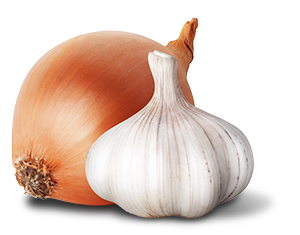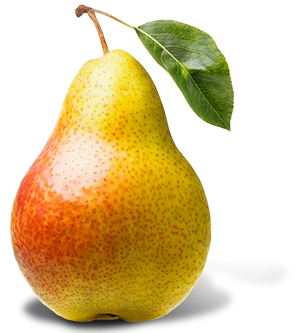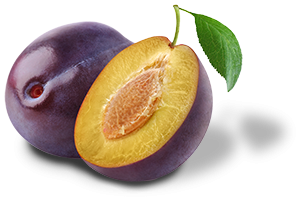Can a low-FODMAP diet cure IBS?
“Irritable bowel syndrome is a symptom-based condition,” notes William Chey, professor of gastroenterology at the University of Michigan. “Everybody with IBS has abdominal pain and altered bowel habits.” That typically means diarrhea, constipation, or both.
“IBS is a really common issue,” says Chey. “Probably somewhere between 5 and 10 percent of the U.S. population suffers from it.”
Doctors don’t know what causes IBS, and there are no surefire treatments. “But the vast majority of IBS patients link their symptoms to eating food,” says Chey.
Should people with IBS eat a low-FODMAP diet?
“FODMAP is an acronym that stands for fermentable oligosaccharides, disaccharides, monosaccharides, and polyols,” Chey explains. “It’s a fancy way of describing sugars that your small intestine may have trouble digesting and absorbing.”
It’s not only people with IBS.
“If anybody eats enough FODMAPs, they will get to your colon and be fermented by bacteria, producing gas and drawing in fluid, which can cause diarrhea,” says Chey.
Of course, “enough” may mean a huge dose for most people, so they don’t have to worry.
“But people with IBS have issues with motility and gut hypersensitivity, so they are more prone to develop symptoms from small doses of FODMAPs,” says Chey.
And FODMAPs occur in a wide range of foods.
Which foods have FODMAPs?
This list of examples doesn’t include all foods or food ingredients with FODMAPs. For thorough lists and help following a low-FODMAP diet, visit myginutrition.com or monashfodmap.com.
Oligosaccharides

- Onions
- Garlic
- Wheat, rye, barley
- Beans, lentils, chickpeas
- Asparagus
- Broccoli
- Cashews
- Chicory root (inulin)
Disaccharides (Lactose)
- Milk
- Cottage cheese
- Ricotta
- Ice cream
Monosaccharides

- Honey
- Agave syrup
- Apples
- Mangos
- Cherries
- Pears
- Watermelon
- High-fructose corn syrup
Polyols

- Sorbitol
- Maltitol
- Xylitol
- Peaches
- Plums, prunes
- Blackberries
- Mushrooms
- Celery
How to tell if a low-FODMAP diet works for your IBS
Different FODMAPs affect people differently.
For example, “in IBS patients, fructans are probably the most common trigger for symptoms,” says Chey. Fructans are oligosaccharides made of short chains of fructose molecules. Wheat and onions are the top contributors of fructans in a typical diet.
“When IBS patients eliminate wheat from their diet and get better, they often assume that it’s from restricting gluten,” says Chey. “But evidence suggests that they get a better response from restricting fructans instead of gluten.”
To figure out which FODMAPs, if any, trigger your symptoms, you have to follow a low-FODMAP diet.
“We recommend that people remove FODMAPs for two to six weeks,” says Chey. “That restriction period determines whether an individual is sensitive to FODMAPs or not. After six weeks, if symptoms haven’t improved, a low-FODMAP diet isn’t going to work.”
How to tell which FODMAPs trigger your IBS symptoms
In one of the best studies, researchers randomly assigned 87 adults with IBS to follow a low-FODMAP diet or a similarly complicated placebo diet. After four weeks, roughly 60 percent of those on the low-FODMAP diet—versus about 40 percent of those on the placebo diet—reported “adequate symptom relief.”
“For those whose symptoms do improve on FODMAP restriction, we then go to the second phase of the diet plan, which is a slow, methodical reintroduction of foods containing individual FODMAPs,” Chey explains.
That lets people go back to eating foods that cause no symptoms.
How often does a low-FODMAP diet work for IBS?
“About 75 percent of people who start the very-low-FODMAP diet move to a less restrictive version,” says Chey. “Restriction is the beginning, not the end, of the diet.”
What matters is whether the cumulative dose for individual FODMAPs crosses a threshold that triggers symptoms. “It’s a low-FODMAP, not a no-FODMAP, diet,” notes Chey.
That’s where trained dietitians can help. “They understand the hurdles that trip people up and can help you identify what’s triggering your symptoms,” says Chey.
To be clear, a low-FODMAP diet isn’t a miracle cure.
“The good news is 50 to 60 percent of patients get better, which is really good for IBS treatments,” says Chey. The bad news: 40 to 50 percent of patients don’t.
“We should not be satisfied that we have the solution,” Chey argues. “I’m hoping this will open the gates for the discovery of other effective diet therapies for IBS.”
Tags
Topics
Continue reading this article with a NutritionAction subscription
Already a subscriber? Log in




